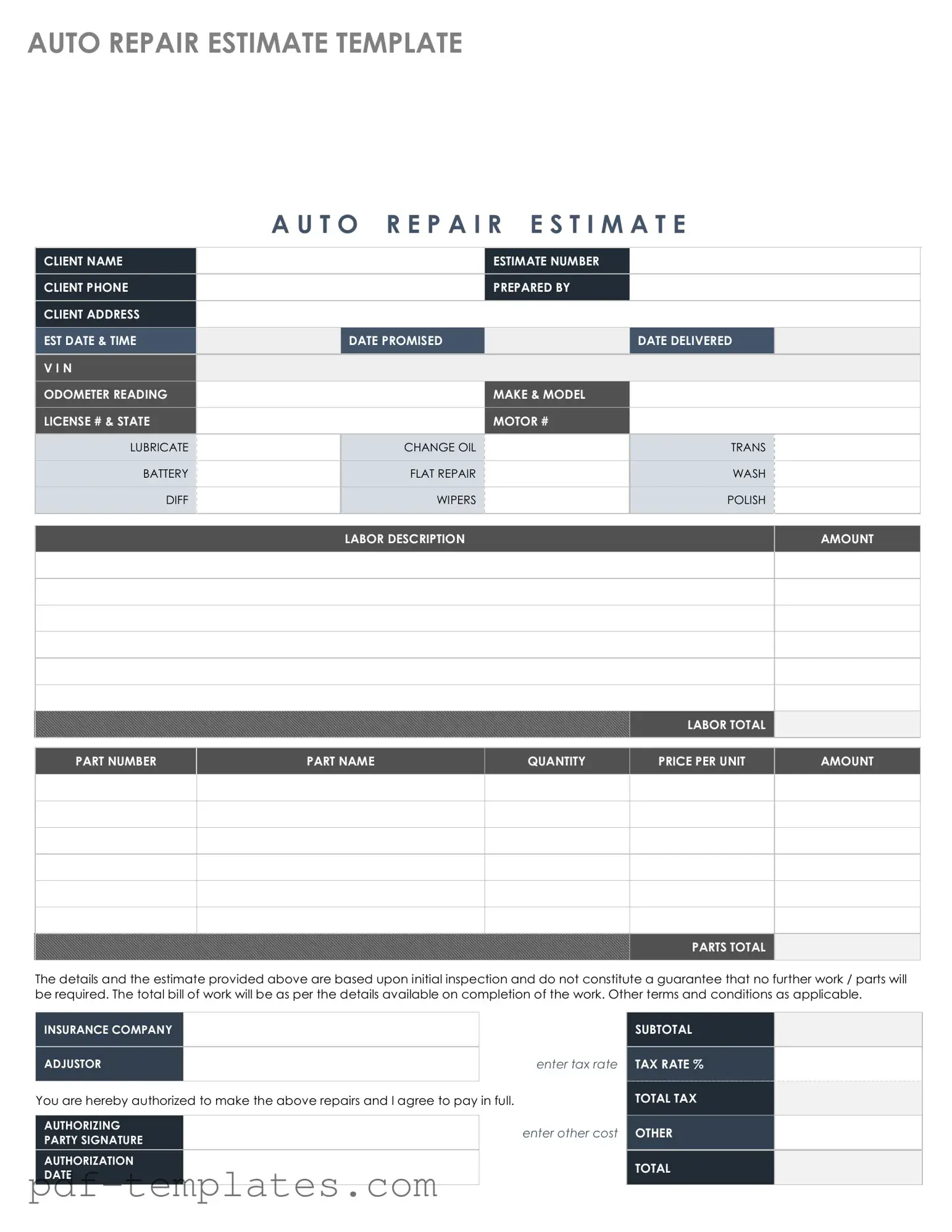Get Auto Repair Estimate Form in PDF
The Auto Repair Estimate form is a crucial document that outlines the anticipated costs for vehicle repairs before any work begins. This form not only helps customers understand the financial implications of the repairs but also serves as a reference for both the customer and the mechanic throughout the process. To ensure clarity and transparency, it's important to fill out this form accurately.
Ready to get started? Fill out the form by clicking the button below.
Customize Form Now
